My Fabulous Foeniculum is no more.
In June 2014, I wrote this post about a single Fennel plant, Foeniculum vulgare, which was a couple of years old at that time. In addition to its cloud-like, airy beauty in the garden,
…it was the nursery and all-you-can-eat cafe for scores of Black Swallowtail butterfly caterpillars.
This particular fennel plant was apparently very happy situated in this mostly morning sun spot.
It not only withstood at least two full Central Texas summers and most of a third, but grew quite tall at points during its life.
I named it Mega-Fennel. This past summer Mega-Fennel started off just fine: lush and full of life and ready for the summer onslaught of butterfly larvae. But during July and August I began noticing fennel foliage die-off.
I hoped, rather than believed, that if I pruned the dead and dying foliage, that somehow, miraculously, Mega-fennel would rally and survive.
Alas, it did not rally. In September, Mega-Fennel was good and dead. I dug it up and unceremoniously tossed the long-lived and butterfly life-giving fennel into my compost bin.
I held no funeral for the fab Foeniculum.
Once the temperatures cooled, local nurseries began carrying fennel again–they suspend selling the cool-season herb during our long summers–I purchased several. I’ve replaced Mega-Fennel,
… from bronze to green, and have added others to my garden. I prefer bronze fennel;
I think it’s hardier than the more weak-stemmed green fennel. Butterflies like both and lay their eggs equally on fennel, regardless of slight differences in foliage hue.
Only a few of the other fennel that I’ve grown have lasted more than one season and none as long as Mega-Fennel. I’ve planted some fennel in full sun and they thrive in the cool months of October-May, but once the calendar flips over to June and summer heat settles in, full-sun fennel suffers under the death rays of the Texas sun. I think Mega-Fennel’s grand success was due to its morning sun position. Going forward, fennel planted in my garden will be placed in dappled light or morning sun.
I plant fennel to attract and feed butterflies, specifically the larval form of the Black Swallowtail, Papilio polyxenes. If you look at information about this gorgeous butterfly of the Americas, there’s no specific mention of fennel as a host plant. Most insects prefer “host” plants that their larval forms feed on and usually, host plants and their insects evolved together. Native plants are intrinsic to the insects of a given region–they are partners in the wider food chain. Historically, the Black Swallowtail larvae wouldn’t have dined on fennel because it’s not a native plant to North America, but instead, an introduced Mediterranean herb. The Black Swallowtail larvae feed on plants from the Apiaceae, or Carrot Family. According to the Lady Bird Johnson Wildflower Center’s plant database, there are about 100 native North American plants in the Apiaceae family and just over half of those grow here in Texas. Some of these are perennials, some are annuals; most sport umbel inflorescence. A few are water plants and many look like they’d be quite delicious added to a salad. I have to assume (though I didn’t find specific information confirming this) that in unadulterated habitats, Black Swallowtails would use at least some of these plant hosts for their larvae. Considering that wild space is now at a minimum and disappearing rapidly, what’s a Black Swallowtail to do?
I’m not sure I’ve ever seen native Texas Apiaceae plants for sale, though I’ll bet seeds are available at Wildseed Farms or Native American Seeds. Because the native Apiaceae plants are not the commercially appealing landscape plants common in the retail nursery trade, the next best thing for the wildlife gardener is to plant an introduced species which is a member of the Apiaceae Family, that is regularly available for purchase, and that butterflies can adapt to. And that’s exactly what has happened–in my garden and many others.
I’d rather grow native plants, but will make-do with appropriate non-natives if necessary. As long as the butterflies are happy, eating well and laying eggs, this gardener is happy.
Other introduced host plants of the Black Swallowtail are dill, carrot, and celery. But for my garden and in hopes of hosting another Mega-Fennel, I’ll stick with fennel for my visiting swallowtails and their progeny.
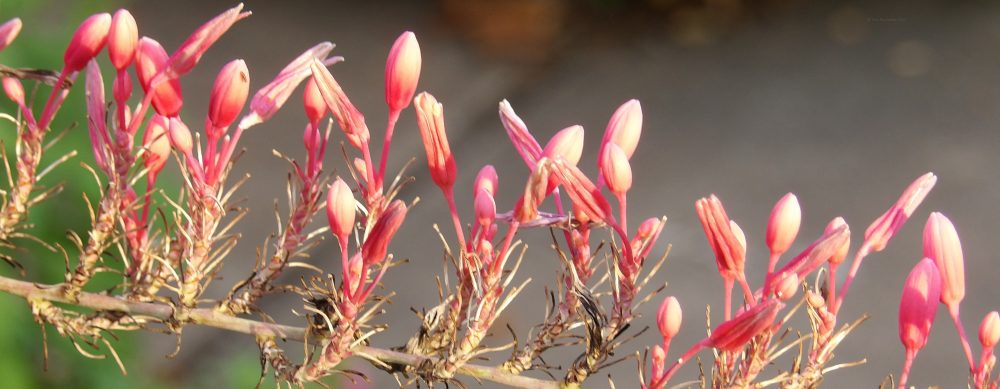









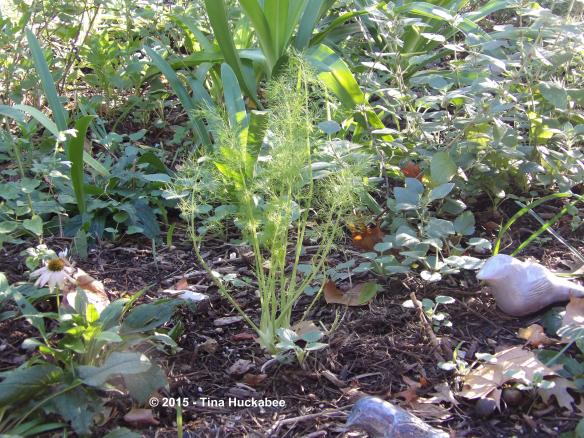
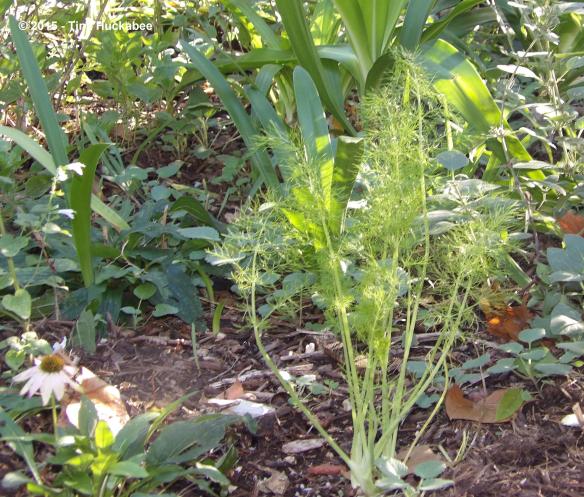


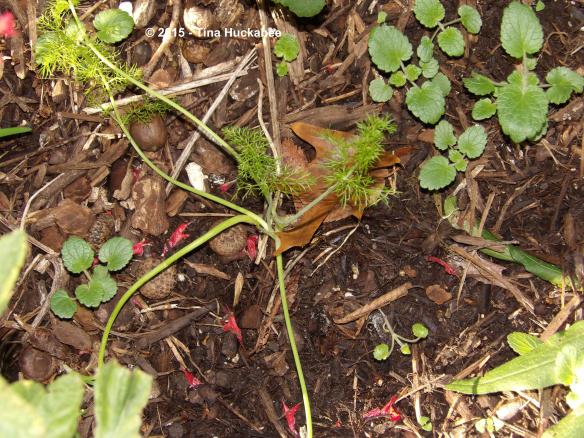
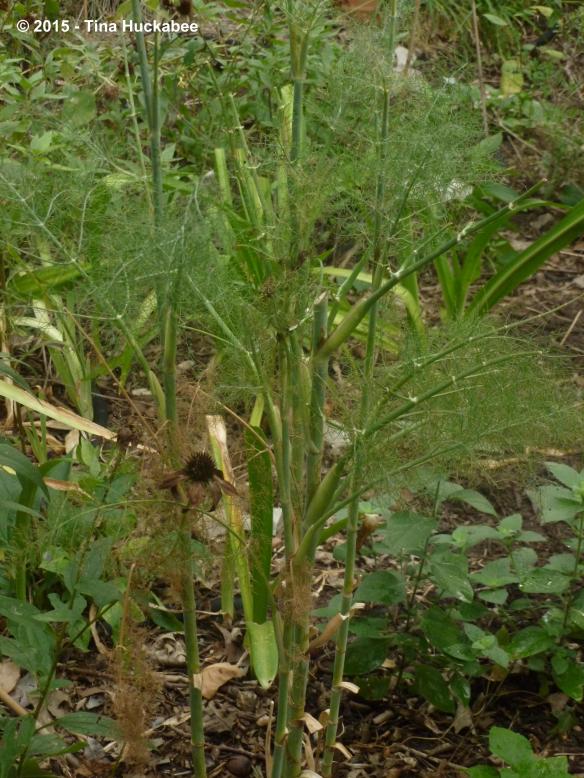
I agree that Bronze Fennel has a long life. We started with one plant and allowed it to seed around our sunny south facing gravel garden. There are always lots of tiny fennel seedlings to weed out too but alas no Swallowtail Butterflies here in Lancashire England.. We leave the seed
heads on for height/form through the winter months then prune back only when lots of new growth appears in spring. Thanks for sharing your lovely photos and useful info.
LikeLike
Hi Gillian! Mine has never seeded out, though I probably garden in a less hospitable environment. I’ve noticed though that the bronze is longer-lived and personally, I like the way it looks, so beautiful in the winter and early spring. I know that in certain places in Oregon, cities discourage the planting of fennel because it’s proven invasive. But that’s Oregon, not Texas!
LikeLike
It probably died because you had so much more rain than usual this year in Austin. My fennel usually last about 2 or 3 years. It is a great plant to grow for children to see nature at work.
LikeLike
Hi Sherrie. It’s possible that its death was because of the flooding in May/June and then the nothing rain and high temps for the rest of the summer, but I’m betting on the age of the plant as being the basis for its demise. Still, our wacky weather didn’t help things….
You’re right when you say that it’s a great teaching plant for kids and the whole egg-larva-chrysalis-butterfly life cycle.
LikeLike
Wild carrot grows ABUNDANTLY on our side of Austin with our very akaline and often hard packed soil. It is in fact considered a weed by my neighbours. “Fools!” I say in my best imitation of a Hollywood supervillan.
LikeLike
Nice!! I hope you add Bwahahahha! after your exclaimed “Fools!”
LikeLike
Thanks for the reminder to replace mine! It made it two years but also passed its contribution along to the compost this summer.
LikeLike
The great thing about fennel is that it’s relatively inexpensive. I haven’t had much success with seeds, though I don’t know if that’s me or this particular climate and soil situation.
LikeLike
I haven’t had luck with seeds for them either!
LikeLiked by 1 person
I usually have fennel (bronze definitely) growing in the garden, but I have just realized whilst reading your post that in fact I don’t this year. So good luck with your replacements and I guess I need to get some more seed too. Shame we don’t get the black swallowtail butterflies though.
LikeLike
The bronze is so lovely, isn’t it? Yes, the swallowtails are definitely an added bonus to growing fennel. Good luck with your replacements too!
LikeLike
you are so lucky to have butterflies on your fennel, so sorry though that you lost mega fennel, I don’t think the flood would kill it as I have had both bronze and green fennel since the first year I was here so they are 14 years now, they have lived with continuous rain and flooding, and in 2012 a 3 month summer drought, though we do not get your high temps and by then they were (still are) very large plants, at least 2 foot across the crown, I’ve never noticed any insects feeding on my fennel, the spiders like decorating them with webs and the birds eat most of the seeds, I save some seeds for fennel tea, they are beautiful plants with airy floatiness, a see through plant, could you cover the base of the plant so the root is cooler, save some seed and start if yourself, or if you can get plants at a low cost it may not be worth it, the black swallowtail is a beautiful butterfly, Frances
LikeLike
Hi Frances! I think we are very fortunate to host the beautiful swallowtails on the fennel, though I haven’t seen quite as many this year as during most years. In Oregon, I’ve seen fennel grow huge–probably similar to your experience. Here in Texas, our summers are just too hot and long for that. I have seen aphids on my fennel, but the ladybugs and their larvae always move in shortly afterwards and take care of business, so it’s not usually much of a problem.
LikeLiked by 1 person
I find bronze fennel is weaker than the green. Here in Italy fennel is the preferred food of our Swallowtails, I have lots in the garden, it is almost invasive! In fact if I don’t remove the small seedlings from places I don’t want it to grow, once the tap root is down it is almost impossible to remove them.
LikeLike
Oh, that’s really interesting. I’m also fascinated that your fennel is a bit of a problem plant. I guess I assumed with your hot, dry summers, that they would act much as they do here–not particularly happy. You’re so right about the taproot; I was amazed at how long the root was on Mega-Fennel when I pulled it out.
LikeLike
I have a few fennel plants that are getting into the 4-5 year age range (not bronze) and this year is the first and only time I’ve ever had any seedlings appear (though they washed way WAY down the path before sprouting). That said, they are getting pretty leggy and I cut them back hard recently, hoping for more vigorous growth if/as they survive this winter. I put mine in tomato cages to address a lot of leaning. I think mine are becoming shaded out more than they like. I may have to either try to move the main clump into better sun. I did stick another baby fennel in a new spot to see how it takes these because I agree – these plants are beauties almost all year and are well worth replacing as needed. Go go swallowtails!
LikeLike
Wow! Five years! I was thrilled with my roughly 3 year-old fennel. I guess they are very happy in your garden. I wonder if my soil is too heavy for them and that’s why they don’t linger in the garden quite so long. I’ve learned to treat fennel like an annual and considering that they’re not expensive, I’m okay with that. Yes, yes: go swallowtails!
LikeLike
I also grow fennel for the Swallowtails. Ours lives through the winter, so I’m surprised yours won’t go dormant and come back. It also self-sows here. I also grow parsley, dill, and Zizia aurea for caterpillars – and I have yet to see a single cat. This makes me very sad. We do occasionally see Black Swallowtail adults (as well as other species), so I don’t know what gives. Glad you have so many larva, and I’m not jealous at all.
LikeLike
Wow–your winters don’t do the fennel in? They’re beautiful and evergreen here, but we don’t get nearly the cold. I’ve also grown parsley and dill, but neither are as summer-tough as the fennel, which really isn’t very. 🙂 I’m sorry you’re not getting larvae–I wonder if they breed in your area?
LikeLiked by 1 person
I am looking for information about black swallowtails laying eggs on dead/dying fennel. My 3 year old fennel plant has turned all brown. It bloomed profusely and has many seed heads on it, but it is clearly dead now but still stands at 8 feet tall. The crazy butterflies are not noting that there is no foliage and are laying eggs all over the plant (it is August). What to do? I will soon have many cats but no food for them. What a shame.
LikeLike